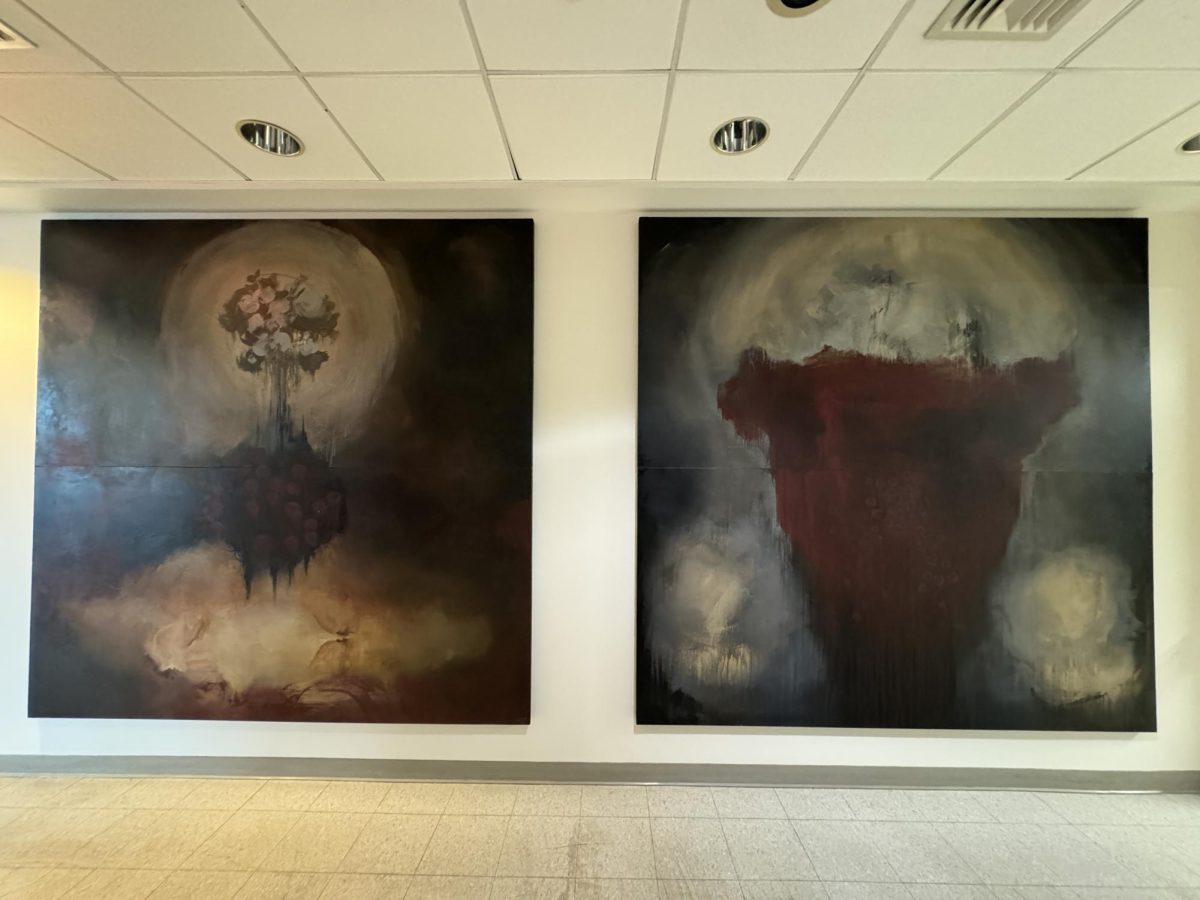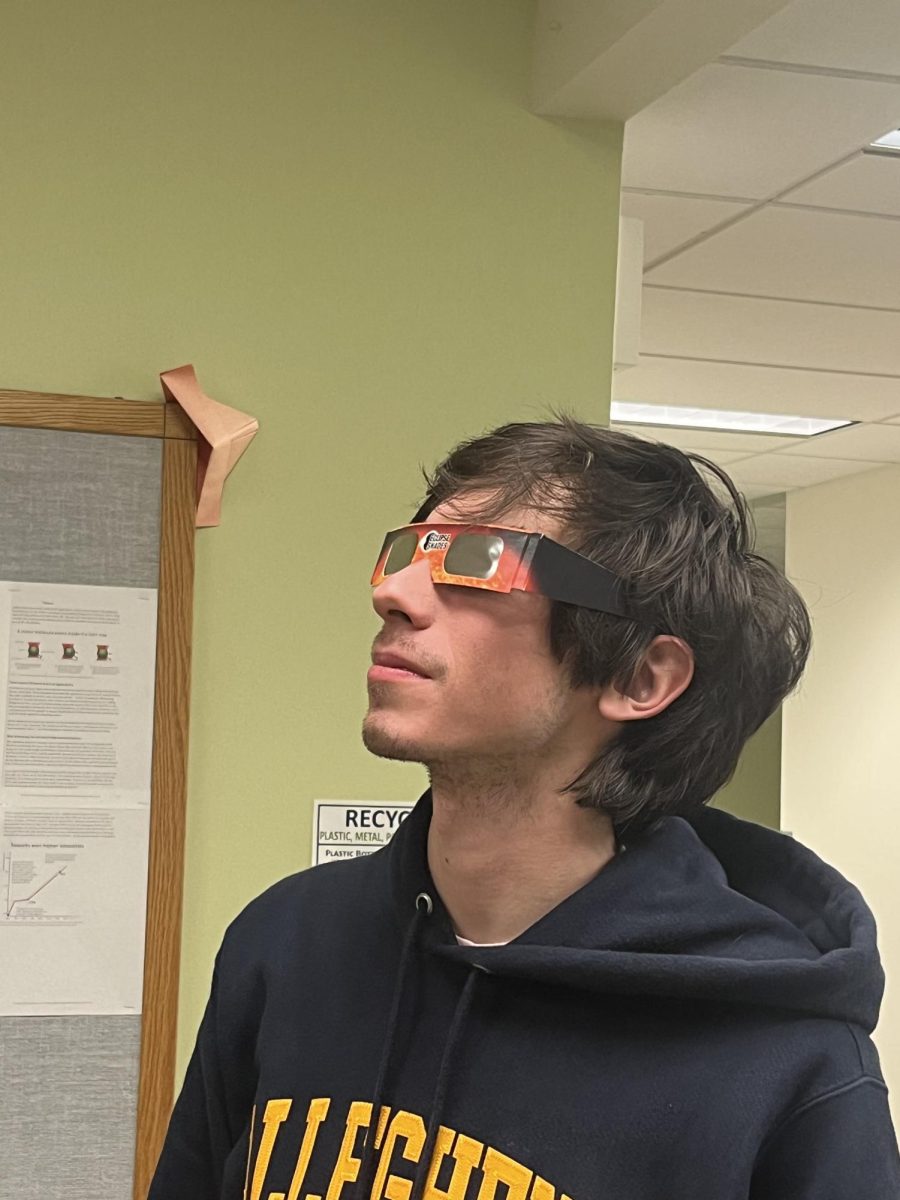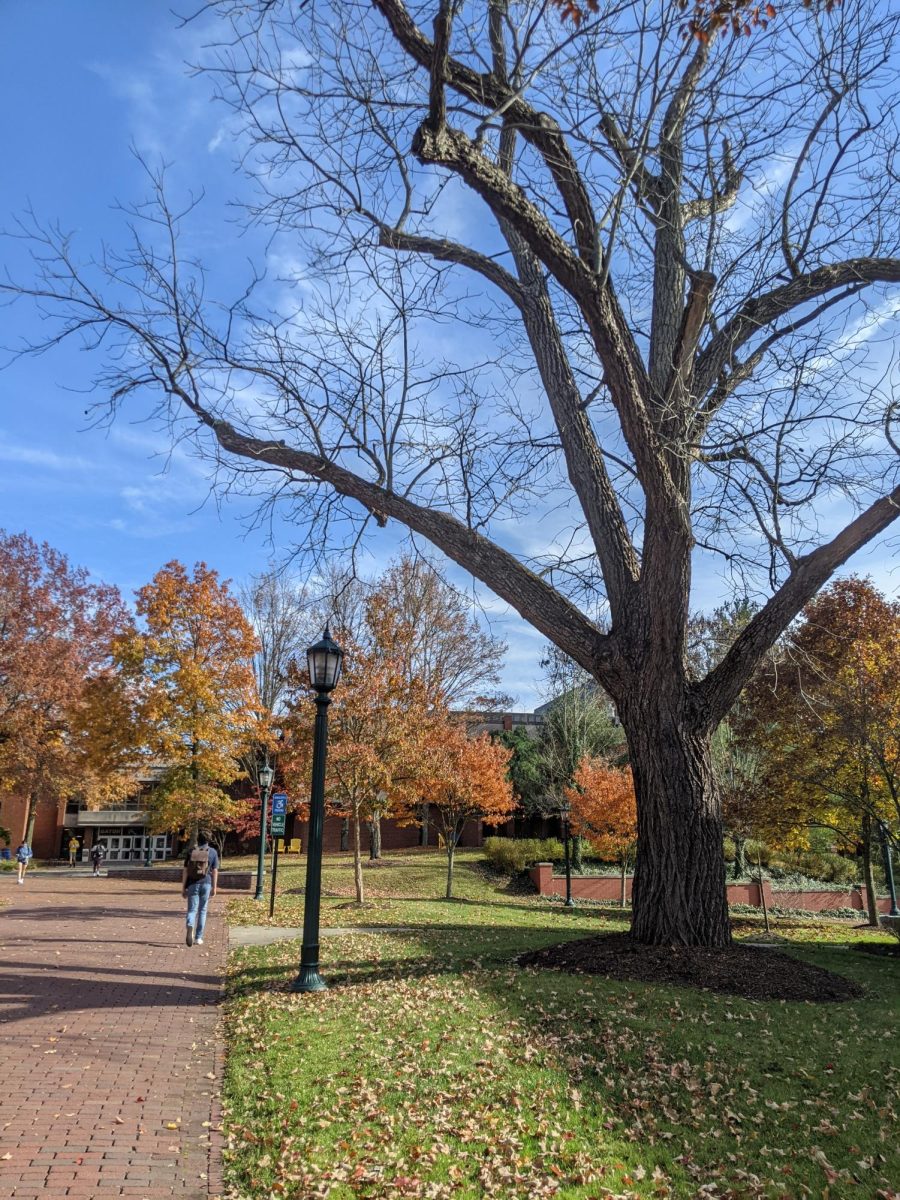Our universe is a vast place where the average distance between stars is an inconceivable 20 trillion miles.
The probability of observing a particular astronomical event—something like a supernova, a powerful stellar explosion—through the lens of a telescope during a quiet evening of stargazing is incredibly, mind-bogglingly small.
But people do it. The amateur astronomer Robert Evans, for example, has discovered more supernovae than anyone else in the world.
“There’s something satisfying, I think,” Evans once said, “about the idea of light travelling for millions of years through space and just at the right moment as it reaches Earth someone looks at the right bit of sky and sees it. It just seems right that an event of that magnitude should be witnessed.”
Jake Vingless, ’13, and Zach Silberman, ’13, are two Allegheny physics students who have experienced a stroke of luck of their own, one that someone like Evans might admire.
The pair studies stellar mergers, or the joining of two stars into one. Vingless and Silberman’s stellar merger projects took off after a serendipitous discovery by another group of scientists.
“One day these astronomers were just looking over some of their telescope images, and they noticed that there was a major flare-up,” said Vingless. “They started to look into it because it was kind of odd.”
The astronomers’ camera had been pointed in the direction of the mysterious flare-up—which turned out to be a rare stellar merger–for years by that point, as physicists monitored something unrelated in the field of view.
“This merger just happened to be in the frame of their telescope,” said Silberman.
Eventually, someone realized that the backlog of telescope images also contained many years of previously hidden stellar collision data. Vingless and Silberman work with these images in their projects now.
What it really means to observe a stellar merger today, of course, is to witness the aftermath of something that happened long, long ago (the resulting light of a merger event takes thousands of years to reach us on Earth, if you needed any reaffirmation of how very big space is.)
Collisions between stars happen about every 10,000 years in the Milky Way Galaxy, and more often in other galaxies where stars are closer together.
These stellar mergers are characterized by a bright outburst of light that dims over time. The merging stars move around each other in a tandem spin, growing brighter at first.
Soon, however, they reach a plateau in brightness where emitted light becomes reddish and faint. This red color emerges as electrons in the stars’ gases cool and fall back down to their respective atom centers.
It is possible to set up a theoretical merger model using computer programming, and in fact this is largely what Vingless and Silberman’s work entails.
A supercomputer first processes the code that will dictate the conditions of the merger, and another computer later analyzes the data to create videos of the stars colliding.
It is a time-consuming process; Vingless said that he once spent a week trying to figure out how to render the collision in 3-D with the program.
“There’s this really, really long and complex code,” Vingless said.
“Hundreds of thousands of lines,” added Silberman.
“We still do not understand every small bit of it,” Vingless said.
The kinds of videos that Silberman and Vingless eventually create are intriguing enough to captivate scientist and layperson alike.
Model stars take on a rainbow of faux colors—much more vibrant than the dim, red-tinted signature that an astronomer might look for in telescope images—to indicate distribution of mass.
In a simulated merger of two identical stars, you can watch as the stars slowly tip to the side and threads of matter begin to pull away at the corners. Suddenly, the spinning stars pick up speed, there is a burst of gas, and the two become one.
All of this happens because as stars grow bigger, they begin to interact with neighboring stars. At a certain point, the previous balance of each is perturbed, mass is transferred between stars, and a merger occurs.
It’s important to study the few stellar mergers that we have observed so that physicists may make inferences about those that we may never observe.
“If I can show that one star [in a merger] had this much mass, the other star had this much mass, and they were separated by this far—if we can do that,” Silberman said, “then it proves that we can also do it for all such systems that we know about and figure out if we can predict events like these mergers.”
Vingless has also taken on a related project, with a twist: he is studying a system in which one of the stars in the stellar merger binary is a black hole.
“I asked, what happens if I put a black hole as one of the stars in the simulations?” Vingless said.
Of the three main types of black holes, the most common are either small black holes, about the size of a star, or supermassive black holes, which are extremely big and often at the centers of galaxies.
Vingless is concerned with the less common intermediate size, which to this point has not been confirmed directly by observation.
“It’s been kind of sneaky about showing up,” Vingless said. “People think that this black hole candidate used to be the center of a really tiny galaxy.”
The potential black hole on which Vingless focuses emits bursts of x-rays about once a year. Vingless asks things like how big it is, what it’s doing, and how it was made.
Ultimately, he’s hoping to make identification of similar black holes easier in the future.
“After this [black hole] is proven to exist, there’s probably going to be a lot more [found] that people will start observing because people will know what to look for,” Vingless said.
This is what much of Vingless and Silberman’s work seems to be about —the slow process of becoming a more informed observer. Informed observers see more because they can recognize what they see.
“For some reason, I don’t know what it is with science,” Vingless said, “but the moment you find one thing like that, you suddenly just find tons of them.”
The students’ adviser, professor of physics Jamie Lombardi, explained that the stellar merger simulations provide important trial and error runs for piecing together the dynamics of these systems.
“Through trial and error, you start to learn about trends,” he said. “As you piece together these trends, it becomes less like trial and error and more like a hunt.”
How do you know when a simulated model matches up with reality?
This is one of the biggest challenges that Lombardi and his students face, and there is no easy answer, Lombardi says.
Each lab runs its own code, and a merger that behaves similarly across multiple codes has a higher chance of being accurate.
Physicists also test their systems against known constants.
“All those concepts that you learn about in Physics 101—those are important,” Lombardi said. “The code is only as good as the physics you put into it.”
Most importantly, physicists working with stellar merger simulations must learn to understand their results at a deeper level. They must ask themselves—does this make sense?
Vingless and Silberman know this well already.
“Physics is full of skeptics,” Vingless said. “When you find something, you never go, ‘I found something!’ You always go, ‘What went wrong? Why did I get this and not what I expected?’ You try to figure out what you did wrong rather than whether the actual theory is wrong.”
“It’s a useful pessimism, though,” added Silberman.
For all of its uncertainty, Zach and Jake are sticking with physics, as they always have.
“[Vingless and I] have pretty much taken the same slew of classes together; we’re in the same fraternity together,” Silberman said. “I think there’s only been like three or four classes that we haven’t taken together.”
“We ended up just kind of meshing and realizing that we both like this kind of field, so we kept sticking with it,” Vingless said.
Still, neither one has entirely made up his mind as to where he wants to go in the future.
“I like what I’m doing right now, but I’m still in that phase of not having any idea what I want to do with physics,” Vingless said. “Because there’s so much that you can do with physics.”
Vingless in particular has larger dreams in the back of his mind, dreams that exist outside the scope of any classroom.
“I’m actually hoping—I’m really, really hoping—that I get sent one of the applications for that Mars One Project,” Vingless said.
As Vingless spoke, Silberman smiled at the other end of the table.
“Yeah, he wants to go to Mars,” Silberman said.
Both Vingless and Silberman have enjoyed their time studying in the physics department under Lombardi’s lead.
“There’s such a dynamic between class and research,” said Vingless. “If you find something positive, or even something negative that you found, he’ll get so excited.”
Lombardi appreciates the pair’s presence in his lab as well.
“I think what’s nice about this is that students like Zach and Jake get to work with cutting-edge physics research,” Lombardi said. “It’s been for me a wonderful process [to advise them] as they’ve been working on their senior projects.”
At the end of the day, much of what Vingless, Silberman, and Lombardi do in the future will be up to luck—catching the right spot of sky at the right moment, when there is so much there—but in the meantime they are trying to make sense of what they can observe.
They will continue to find these lucky moments and run with them—to take as much from a moment as they can and extrapolate to understand more of what they cannot see.
“It’s absolutely sheer luck that they found [the stellar merger], and for us to be able to see that it happened thousands upon thousands of years ago, though we’re just seeing the remnants of it now,” said Vingless. “It gives us a look back into history, into the whole function of the universe. We can figure out the dynamics of stars and what happens when weird things like [stellar mergers] actually occur.”





